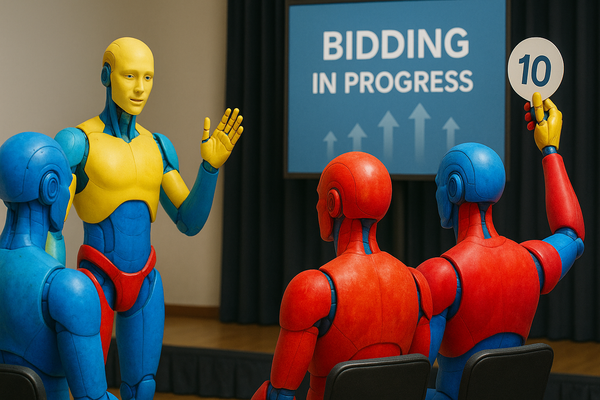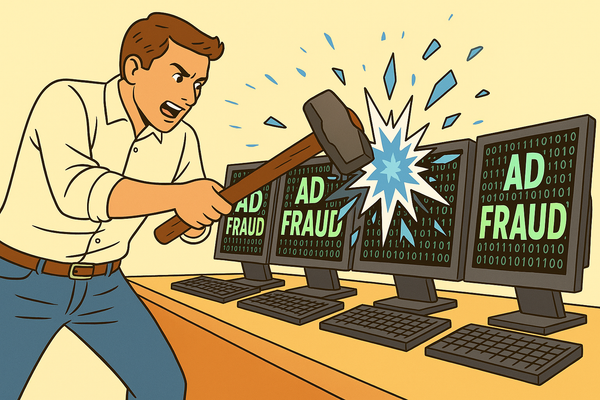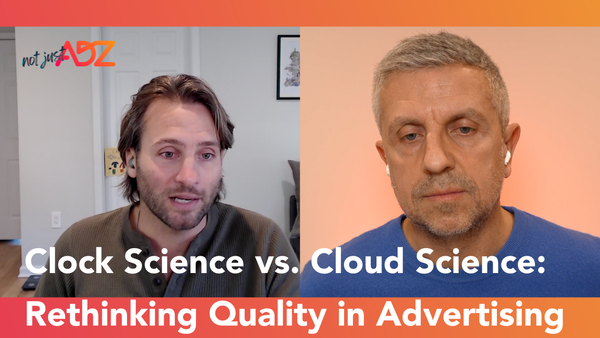To Win Back The Audience, Digital Advertising Must Return To Innovation | AdExchanger
From the consumer’s point of view, advertising hasn’t evolved.

From the consumer’s point of view, advertising hasn’t evolved.
Digital ads mimic print’s design as simply a space on a page. And video ads take the old TV approach of interrupting content.
The promise of rich media and creativity in the early aughts never materialized, as digital advertising embraced the big, programmatic factory belt that suffocated creative flow.
From 2008 onwards, the industry prioritized reach vs. quality and dumbed down ad format specs in order to guarantee the widest adoption. Ad impressions sold by the truckload at decreasing costs, which increased available ad slots, further degrading the user experience.
While the industry, engaged today in a series of crucial decisions around identity and addressability, believes it’s reinventing advertising, we are not truly innovating. Setting aside issues around privacy, we are not addressing the most fundamental topic: the lack of user engagement.
Instead, we stubbornly obsess with reaching users at scale and measuring their interactions, while largely ignoring the fact that those very users have long turned their back to digital advertising and consider it mostly a nuisance, and even a threat.
So how do we rebuild the channel to win the audience’s attention back?
According to 2020 Blockthrough’s PageFair Adblock Report, 527 million people blocked ads by default in their mobile browsers by the end of 2019, a 64% increase from the last edition of the report in December 2016.
And when audiences don’t reject digital ads, they are blind to them.
Finding ways to re-engage consumers with digital ads, however, requires a new way of thinking about people. The industry often limits itself with its allegiance to automation and optimization and requires an approach that’s more humanistic.
The business consultants Gary Hamel and Nancy Tennant described, in the Harvard Business Review, how innovation can stagnate in any industry: “Executives read the same trade magazines, go to the same conferences, and talk to the same consultants. After a while, they all think alike. Innovators, by contrast, are contrarians. In their quest to upend industry rules, they learn how to distinguish ‘immutable laws’ from ‘ingrained beliefs.’”
The digital ad industry’s narrow mental tunnels are at the root of its failure to truly innovate — and why it instead focuses on tweaking the existing systems that clearly aren’t working.
Innovation in advertising is also hindered by the self-preservation of certain parts of the industry at corporate and individual levels, mainly in ad tech but also across the board, with a “don’t ask, don’t tell” attitude that allows bad or nonsensical practices to flourish … until explicitly called out by the entire industry.
These inside forces within the digital advertising industry are mainly focused on cosmetic changes to perpetuate a business model that rewards aggregators and middlemen, while penalizing media owners and hurting their relationship with audiences.
In “The Innovator’s Dilemma,” Clayton M. Christensen discusses how for established companies, “investing aggressively in disruptive technologies is not a rational financial decision for them to make” because “small markets cannot satisfy the near-term growth requirements of big organizations.”
In refusing to invest, these executives lose the opportunity to embrace the change that will let them become, or remain, leaders.
Innovating in a way that could potentially cannibalize one’s existing business requires strong beliefs.
Amazon’s former director of business development Dan Rose once described in a Twitter thread Jeff Bezos’ innovation principles which gave life to the Kindle.
At a time when “books alone generated more than 50% of Amazon’s cash flow,” Bezos reshuffled his organization and set it on a mission to “destroy its own old business” and develop something new that changed the publishing industry forever.
Likewise, innovation that disrupts the current digital advertising business model will put out of business a huge number of ad tech companies, the entities pulling the strings behind the scenes.
Yet, while the media owners — the victims of today’s advertising business models — would most benefit from disruption, they perversely cannot give up the current short-term revenue cycles keeping them afloat. If they ever stop running on the revenue treadmill, they’ll disappear.
But these potential outcomes are not a good excuse to let a group of middlemen hold an industry hostage.
Innovation in digital advertising should be led by the entity that creates and manages the environment, understands the relationship between its audiences and media and can design a new way to connect consumers to advertisers’ products and services.
More than anything, digital advertising needs a new generation of leaders and innovators.
The next 10 years of digital advertising are being decided right now, by browser engineers, the W3C and the IAB.
And media owners are almost completely absent from the debate.
Originally published at https://www.adexchanger.com on August 14, 2020.





